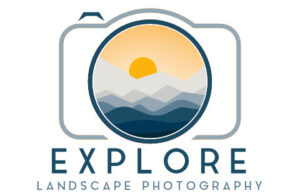A story of a landscape portrays to the audience what can be seen and felt if they were to stand in front of the scene.
Telling a landscape’s story through an image is a fundamental skill for photographers.
Storytelling in landscape photography is how the scene is presented in an image. To tell a story, photographers use strategies to introduce and guide the audience through the photo, helping the viewer to make sense of the scene and build a connection with the natural environment.
Any great story has captivating content and an enthralling narrative.
Landscape stories are no different!
An impactful landscape photo is visually engaging and shares with the viewer the emotion felt if you were physically standing in the location.
Storytelling affects the visual appeal and the emotion portrayed through a still image.
Why is storytelling important in landscape photography?
Stories and storytelling have been part of all human cultures for thousands and thousands of years.
Through stories, we share messages and knowledge and portray emotion and feeling.
With impactful stories, you can influence and inspire others.
However, a story is only as strong as the way it’s told.
Developing your storytelling skills through still images will help you elevate the story you’re sharing and enhance your landscape photos.
Story vs Storytelling
A story is essentially about the characters, their interactions, and the events that occur.
For a landscape story, the characters are the subjects and elements in a scene. Interactions between elements make a more engaging story.
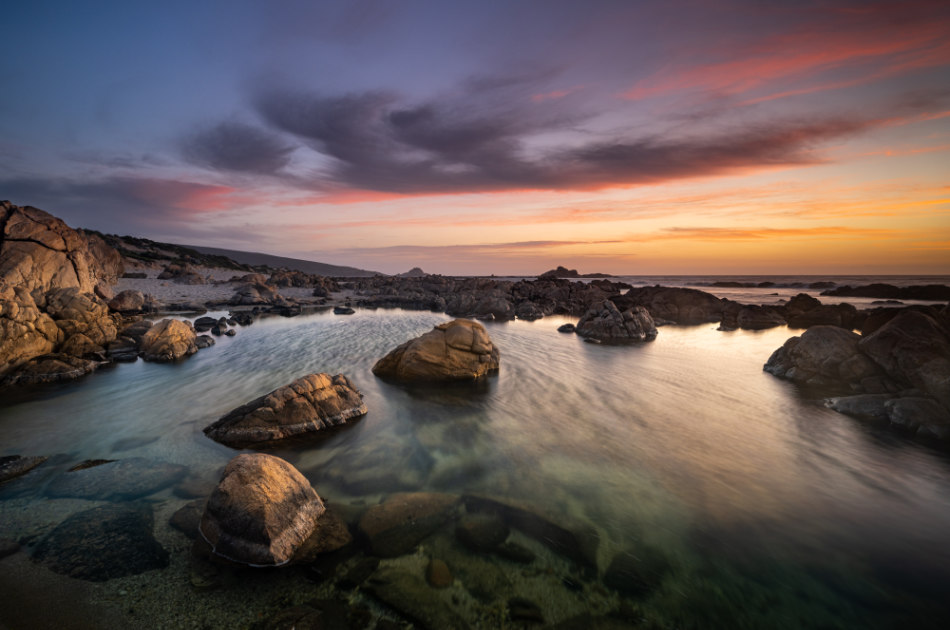
Events like sunsets, sunrises, and weather conditions like rain and storms can provide unique light and opportunities to capture a better story.
Storytelling is the approach you take to share the story you found within the landscape.
Storytelling defines how the story (scene) is introduced and the journey the viewer is guided on through the landscape.
The emotion shared through a story is embellished through how the story is told.
The storytelling strongly influences what the audience focuses on in the story.
Take, for example, a joke told by someone skilled at telling jokes. Their tone, expression, the voices they use and the small details they add all contribute to the delivery and result in raucous laughter from the audience.
Now imagine the same joke told by someone who is not experienced or as confident to the audience on a comedic journey. The punch line is the same, but the joke doesn’t have the same effect.
The same is true for storytelling in landscape photography.
Two photographers can photograph the same scene, resulting in two different images. The story (landscape) is the same, but the storytelling of one takes the audience on a journey and delivers the story with greater impact.
How the viewer is surprised, captivated or inspired by a landscape photo is partly to do with the story but significantly affected by how that story is presented through the photographer’s storytelling skills.
How Composition Impacts the Story and Storytelling
You may have noticed that I explained what a story and storytelling are in the previous section using many terms related to composition.
This is because the decisions you make around composition often determine the story you capture and how you tell that story.
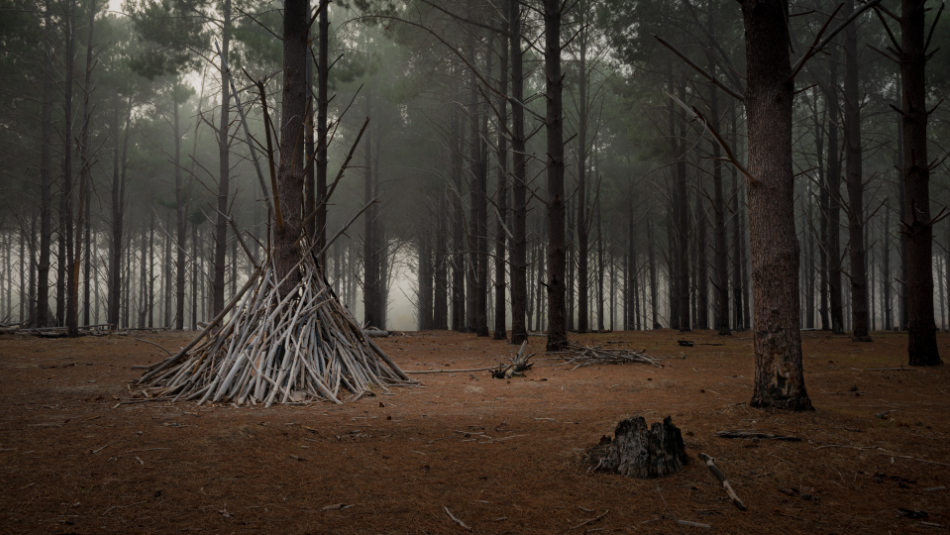
Deciding on what’s included in your frame will essentially define your story.
What you include and how you compose your image’s foreground is likely how the audience is introduced to the scene.
The rest of the composition influences how the viewer is guided through your photo.
While composition can significantly affect the storytelling in an image, it’s essential to think about storytelling when you are discovering, composing, capturing and editing your landscape image.
How do you tell a story in landscape photography?
Now we know how important storytelling is to capturing impactful images, here are some tips to help you improve your storytelling skills.
1. Think About the Viewer
It’s critical that when you are exploring a location for a story and deciding on how you will tell that narrative, you have your intended audience in mind.
If the viewer has never seen the landscape, they’ll be unfamiliar with the features or what makes the location unique. Through the story, it’s your task to remedy this.
For broader appeal, assume your audience is unfamiliar with the location.
Think about what you want to tell them about the landscape.
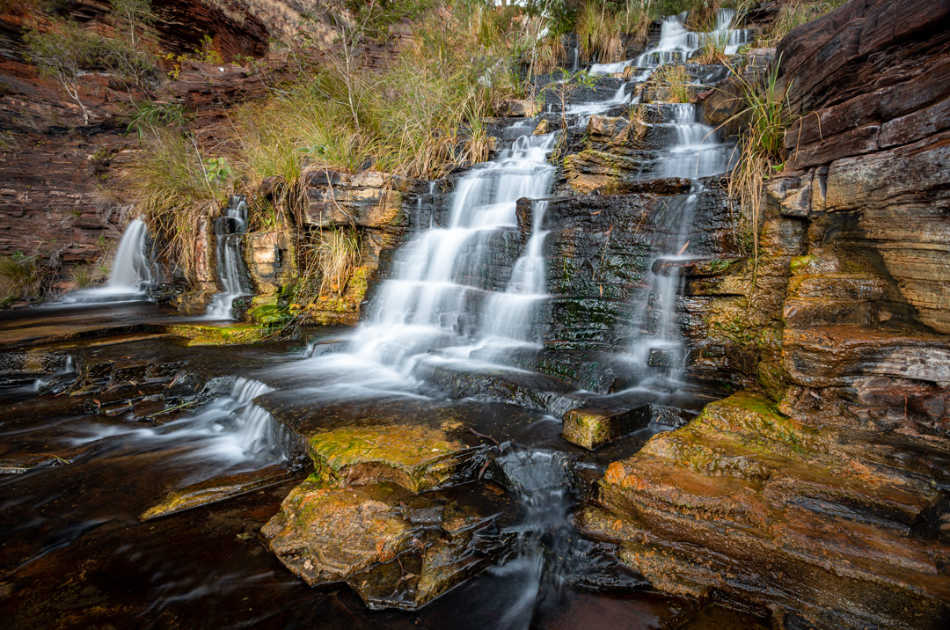
Introduce your scene with a strong foreground or focus area that grabs the viewer’s attention.
Guide the viewer’s eye through the scene and help them understand what they are looking at.
The more prominent you make the story, the more powerful the image will be – this is why simple scenes work so well.
If you are just shooting for yourself, this still works. You are the intended viewer – no one else!
However, if you want your image to captivate a wider audience, the points raised here are vital to capture an impactful photo.
2. Identify the Main Subject
Every story has a payoff. In most landscapes, the payoff is the main subject.
This is where you intend the viewer’s eye to land at some stage when they explore your image.
The main subject can be a prominent feature in the scene, like a waterfall, mountain or a solo tree.
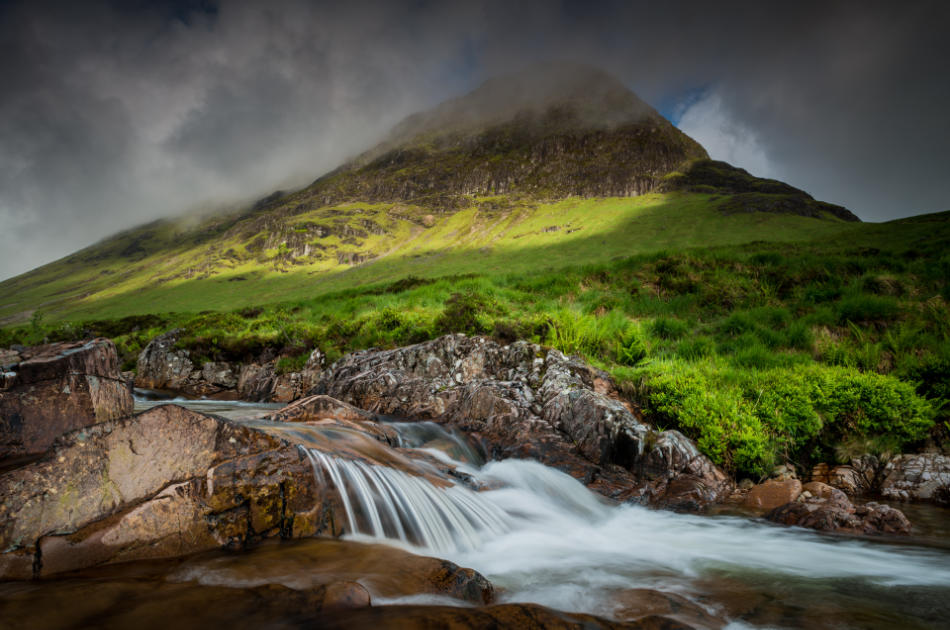
Other elements should support or complement the main subject, ensuring they don’t compete for attention and distract the viewer.
Ensure you give your main subject space in your photo, in the center or slightly to the left or right – avoid positioning it near the edge of the frame.
You can draw the viewer’s eye to the main subject using light to highlight it, making it more prominent than the rest of the landscape or leading the eye toward that area using natural lines (LINK).
3. Create the Lead-up to the Main Subject
Landscape photos are more engaging if the viewer’s eye is moved in some way around the scene.
This encourages the audience to explore and discover more elements within the scene.
So, think about the journey you want to guide the viewer along.
The payoff within a story is where you want the audience to finish their journey.
A strong foreground and leading lines effectively introduce the scene and can then direct the viewer’s eye through the image to the main subject.
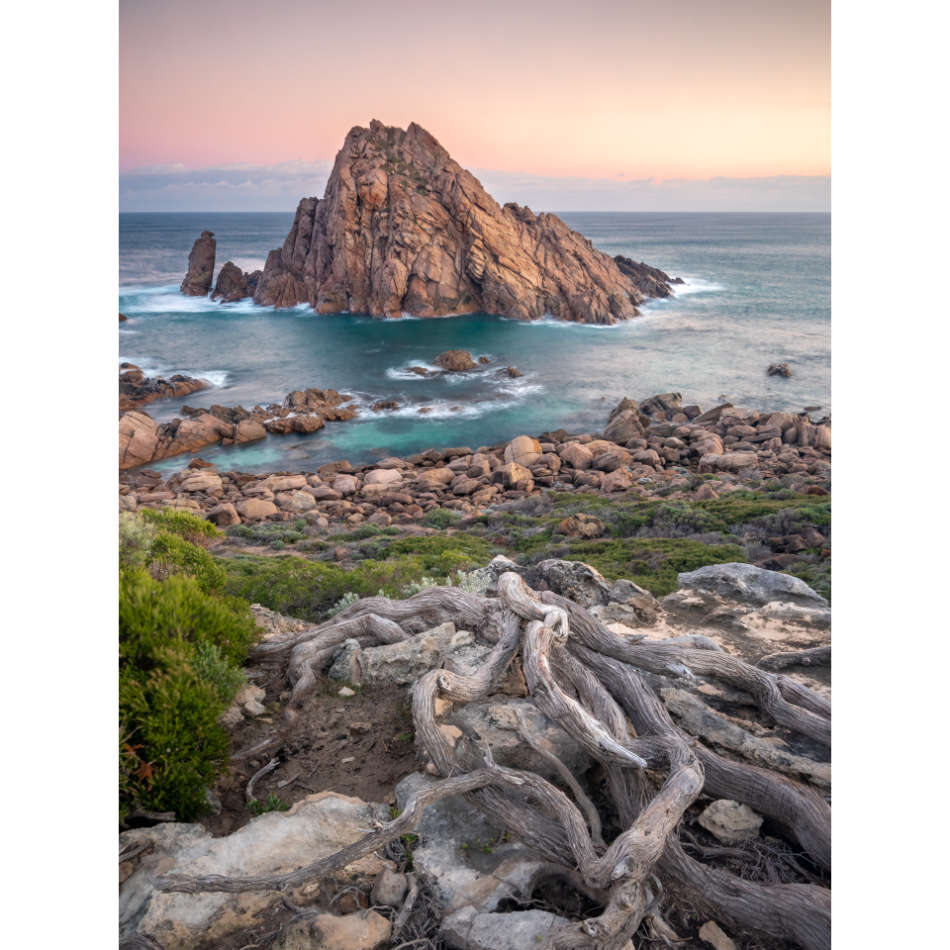
Alternatively, the main subject may be so prominent that it’s likely the first thing that catches the viewer’s eye. You can still other elements within the scene that the audience can explore, which extends or enriches the story.
Supporting elements help inform the viewer about the broader landscape, providing context for the main subject.
4. Think About the Action in Your Scene
A still image captures just a moment, typically from a split second to a few seconds long.
But a lot can happen in this short moment that can add to the story.
Identify the action that is taking place within the scene.
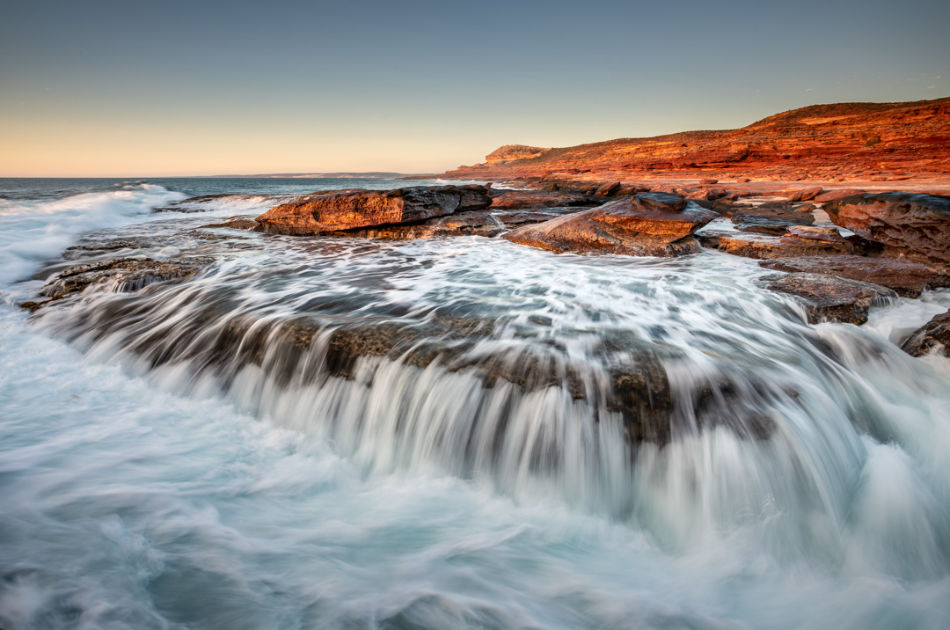
From water flowing down a river or falling down a waterfall to wind moving through the trees or waves crashing against the beach rocks.
These interactions add a new dimension to the story, increasing the interest and introducing a different energy to the photo.
Consider how the audience will portray this action, how best to capture it, and where it should be positioned in the frame.
An extended shutter speed of 1/4 a second to a few seconds will create motion blur from moving objects.
Alternatively, the movement in a scene could be distracting, like leaves or grass being blown around. Select a shutter speed of 1/100 of a second or faster to freeze this action.
In the end, you need to determine if any interaction in a scene adds to the story or weakens the narrative.
5. Use Storytelling to Enhance the Story
In addition to guiding the audience through the story, storytelling can enhance or embellish parts of the narrative.
We’ve already covered one way this works: making the main subject more prominent to the viewer through its position in the frame or size related to the rest of the landscape.
If there is a part of the scene that you want to make more prominent to the audience, bring it closer to the camera – or move the camera closer to the object.
This is another demonstration of why foregrounds in landscape photos can be such a powerful technique.
Another way to enhance a story is to minimize or remove distraction or detail that does not support the narrative.
Looking for a simple landscape is an effective storytelling technique to create a strong story, as the scene has fewer elements to divert the audience’s attention.
6. Make an Impact on the Viewer
An engaging landscape photo impacts the viewer by creating a reaction or feeling within the viewer.
Storytelling can assist in evoking a response from the audience in several ways.
One approach is to share the feeling you experienced while standing in the scene with the viewer so they can relate to the landscape personally.
Alternatively, you might portray an emotion that the viewer can imagine an element in the landscape might feel.
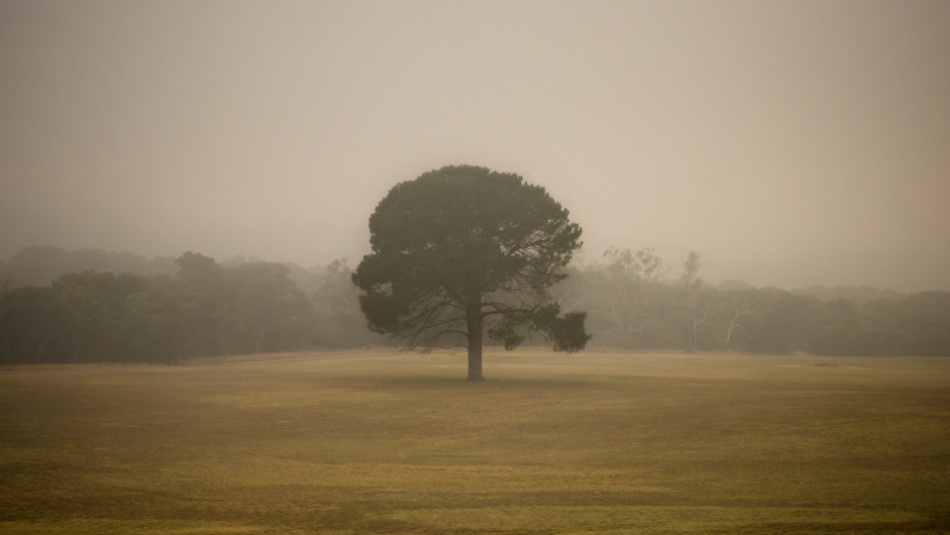
I’ve used this strategy with images of a solo tree like the one above. The tree is alone, and I support that emotion by isolating the tree in the center with plenty of space around the tree.
Another way can get a response from the audience is by eliciting some reaction, for example:
- Intrigue by including darker areas within the image or shadows, which adds a sense of mystery to part of the photo.
- Admiration is a typical response to strive for through sharing a stunning view or an aspect of the outdoors that prompts wonder and respect for the natural world.
- Curiosity by including geological or biological phenomena that create mesmerizing patterns and textures.
- Inspiration generates a response within the audience to the point that it results in some action, whether a change in behavior or to spark the drive within the viewer to pursue their own adventure.
7. Seek Out Smaller Stories
We’ve all been guilty of chasing the expansive views and vast vistas.
They are grand and impressive and hopefully result in an appealing landscape image.
However, many compelling landscape stories are found within smaller portions of the scene.
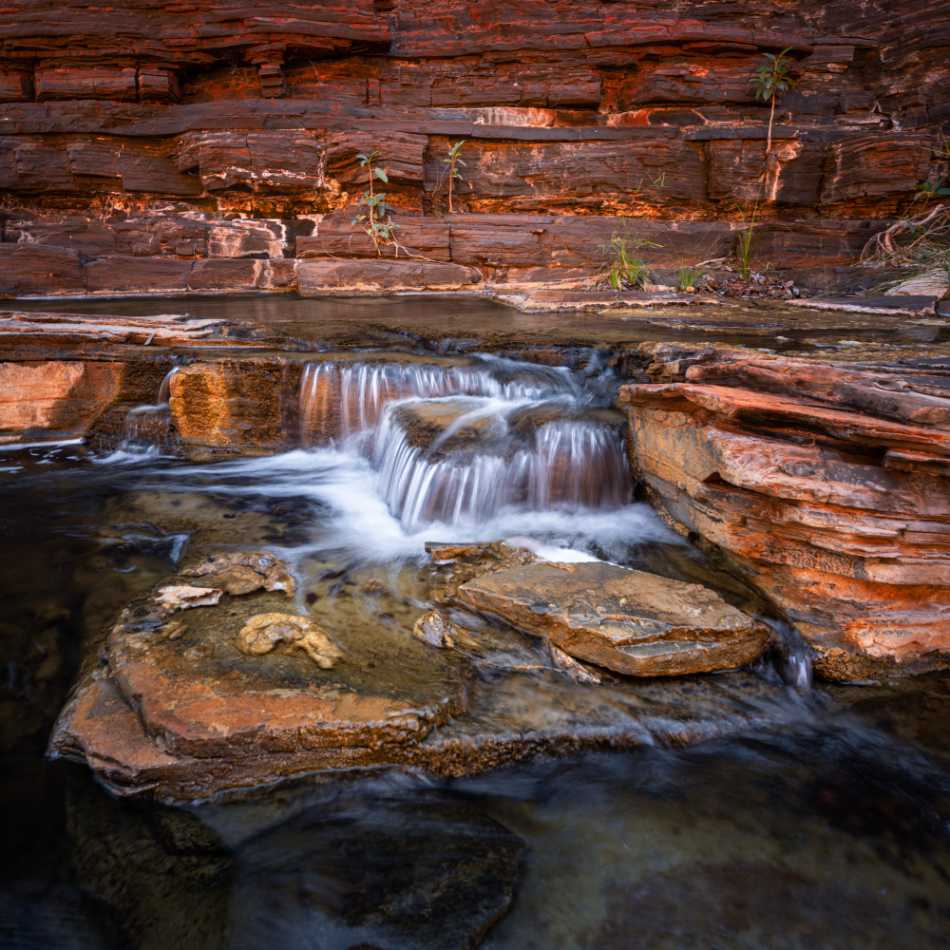
There are several advantages to capturing smaller stories of the landscape, like
- Littler scenes are more intimate, sharing a more personal view with a warm or friendly feeling.
- Smaller stories generally require the camera to be closer to a telephoto lens, which captures more of the finer detail within the features.
- Intimate scenes are simpler, so the captured story is strong with less distraction.
Storytelling through Single Photo versus Series of Photos
Throughout this article, we’ve explored the power of storytelling and how to successfully tell a story of the landscape in a single image.
While finding a compelling story and telling it well in a single picture has challenges, doing so effectively can elevate your landscape photo. Hence, it’s captivating and impactful to a wide audience.
Telling a story through a series of images is easier as you can shoot the landscape from different angles and use various framing options. You can capture a scene with both wide and zoomed-in focal lengths.
You may even photograph the same landscape during different seasons throughout the year.
It’s like a storyboard for a movie or cartoon.
Together, these images could tell a compelling story and, as a collection, be an engaging portfolio to view.
This is an easier approach to telling a landscape’s story.
However, each image may not be impactful or compelling when viewed individually.
So, if you are striving to improve your landscape photography and capture better images, you must learn how to tell engaging stories about the natural environment in a single photo.
QUICK RECAP
The story within a landscape is the features and elements in a scene and how they relate and interact with each other.
Storytelling is how the landscape scene is presented to the audience through a still image, highlighting and focusing features to the viewer.
Composition dramatically impacts the story and storytelling approach used in landscape photography.
Use storytelling techniques to enhance the story, improving your photo.
